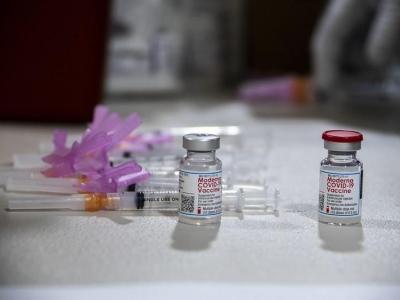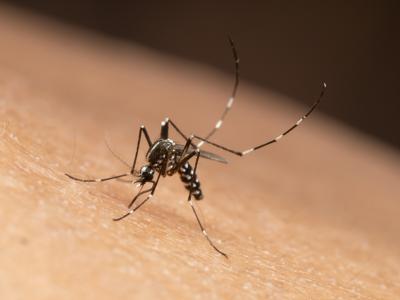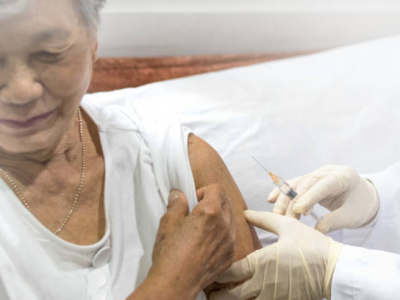Report: Antibiotic resistance, sustainable development are intertwined
A new report from ReAct and the Dag Hammerskjold Foundation calls for antibiotic resistance to be integrated into the sustainable development agenda.
The report, titled "When the Drugs Don't Work: Antibiotic Resistance as a Global Development Problem," argues that if antibiotics continues to lose their effectiveness, efforts to achieve the United Nation's 2030 Agenda for Sustainable Development could be in jeopardy. Using data from the World Health Organization, World Bank, and other sources, the report focuses on how antibiotic resistance could hinder efforts to eradicate poverty, promote economic growth, reduce inequality, fight hunger, improve public health, and protect the environment.
The report also illustrates how antibiotic resistance is intertwined with many of these issues. For example, the authors note, poor people in low- and middle-income countries are more vulnerable to infection, and lack of access to affordable and effective medical care to treat drug-resistant infections may push them deeper into poverty because they have to pay out of pocket for more expensive second-line drugs or for hospitalization. It could also lead people to self-medicate and use antibiotics inappropriately, thereby promoting more resistance. Conversely, efforts to eradicate poverty could help reduce vulnerability to resistant infections.
The report concludes that antibiotic resistance should be included in national or regional target-setting to reach the Sustainable Development Goals, and that stakeholders in sectors beyond health and agriculture need to get involved in efforts to combat resistance.
"The Sustainable Development Goals are deeply interconnected and many goals and targets rely on one another to achieve the envisioned state of wellbeing and sustainability," the authors write. "Antibiotic resistance knows no sectorial limits, country borders or other divisions and therefore requires a level of cooperation that other challenges have not demanded before."
Feb 28 ReAct/Dag Hammerskjold Foundation report
Feb 28 ReAct news release
CARB-X provides funding for Contrafect's amurin platform
CARB-X announced today that it will award up to $1.75 million in funding to Contrafect Corporation, of Yonkers, New York, to develop a new approach to treating serious infections caused by gram-negative ESKAPE pathogens (Escherichia coli, Klebsiella pneumoniae, Acinetobacter baumannii, Pseudomonas aeruginosa, and Enterobacter species).
The funding will support Contrafect's work on amurins, a class of phage-encoded lytic agents that have demonstrated broad-spectrum activity in vitro against all ESKAPE pathogens and Salmonella Typhimurium, and have also show the ability to clear biofilms and act synergistically with a range of antibiotics. The company could receive an additional $5.9 million if certain project milestones are met.
"Amurins are highly differentiated from conventional antibiotics through their novel mechanism of action and potent spectrum of activity against the most threatening Gram-negative pathogens," Contrafect chief medical officer Cara Cassino, MD, said in a CARB-X press release. "We look forward to advancing development of this promising new class of antimicrobial agents with the support of CARB-X."
CARB-X (the Combating Antibiotic Resistant Bacteria Biopharmaceutical Accelerator) is supporting the development of amurins to treat acute exacerbations of cystic fibrosis caused by multidrug-resistant gram-negative pathogens and potentially hospital-acquired bacterial pneumonia.
This is the second award that Contrafect has received from CARB-X, which to date has awarded more than $110 million for pre-clinical development of new antibiotics, diagnostics, and alternative therapies for drug-resistant infections.
Mar 4 CARB-X press release
Study compares prediction methods for multidrug-resistant infections
A study today in Infection Control and Hospital Epidemiology found that two methods for predicting multidrug-resistant infections performed similarly in a head-to-head comparison.
The single-center study by investigators from Johns Hopkins Bloomberg School of Public Health and the University of Maryland School of Medicine compared two statistical models for identifying multidrug-resistant gram-negative infections: logistic regression–derived risk scores and machine learning–derived decision trees. They compared the performance of the two models using a dataset of 1,288 patients hospitalized at Johns Hopkins Hospital with E coli or Klebsiella bloodstream infections to determine which one was better at identifying patients with an extended-spectrum beta-lactamase (ESBL) producer. They also reviewed the practical and methodologic attributes of the two approaches.
A total of 194 patients (15%) in the cohort were ESBL-positive, based on previous microbiologic test results. The results of the comparison showed that in practice the 14-variable risk score and the 5-variable decision tree performed similarly in identifying these patients, with positive predictive values of 94.6% and 90.8% and negative predictive values of 91.8% and 91.9%, respectively. While the C-statistic of the risk score was higher (0.87 vs. 0.77), suggesting better predictive value, the investigators also determined that the decision tree was more intuitive and user friendly.
"Statistical models for predicting drug resistance can provide important information in settings when laboratory diagnostics are challenging to implement," the authors of the study conclude. "These methodologies offer different strengths and limitations, and we hope that their continued utilization in infectious disease research will assist with improving patient outcomes."
Mar 4 Infect Control Hosp Epidemiol abstract
















